Varanasi
Also called Benaras, Avimukta or Kashi, this ancient city is the spiritual heart of India. Considered the dwelling of Lord Shiva and Parvati, it is home to the sacred river Ganges, various ghats and temples. It is called the City of Lights and is renowned for the fine silk called Benaras and its trade and is the hottest spot for pilgrimage among Hindus for moksha or enlightenment.
It is believed that those who repent their sins in the holy water of the Ganges get liberated from the cycle of rebirths in the afterlife. The oldest inhabited city in India, it is believed to be 3000 years old and located along the banks of the famous River Ganges in the state of Uttar Pradesh, in North East India. Also, see must visit 30 Things to Do in Your North East India Tour.
River Ganges is considered holy and hold the power of absolving all of one’s sins. As the scriptures and tradition dictate, every good deed that one does or any sacrifices that one offers here or any prayers that speak here will reap their benefit a thousand times here than in any other places.
Such is the power and influence of Varanasi. It is believed that three nights of fasting can reap you rewards of many thousands of lifetimes of asceticism.
Blank space
Varanasi – The City of Lights
Many Hindus believe that dying in Varanasi is auspicious as it is considered to guarantee salvation/nirvana. So they throng to this city from any part of the world when they realize that they are close to death. The ritual of burning corpses in plain view along the banks of River Ganges is a time-honoured tradition.
Jains also consider Varanasi as a revered pilgrimage spot, as it is the birthplace of Parsvanath, the 23rd Tirthankar, the spiritual teacher and guide in Jainism. Check out Pilgrimage holiday destinations in India and know about these spiritual places histories.
Varanasi is well known for its century’ sold Hindu temples. An estimated 23,000 temples have been recorded in Varanasi. JyotirlingaVisvanatha Temple or Golden Temple has been destroyed and rebuilt several times over the years and is devoted to Lord Shiva.
The JnanaVapi well (meaning ‘Well of Wisdom) is alleged to have been dug by Lord Shiva himself. The Gauri Matha temple is dedicated to the sister of Lord Vishwanath, and it is a tradition to visit it as the last place before you leave Kashi.
Blank space
The city is distinguished in various history books and popular culture as a symbol of renaissance, Hindu learning, philosophy and culture and civilization for about 3000 years. Mrs. Annie Besant, the famed theosophist and philanthropist, selected Varanasi as the residence for her ‘Theosophical Society’.
Pandit Madan Mohan Malviya, established ‘Banares Hindu University, the seat of learning and culture for many and the largest University in Asia in Varanasi. Ayurveda is said to have originated at Varanasi. Social reformers such as Kabir and Ramananda found initiative for their struggle against the caste and class system in Varanasi.
Maharshi Patanjali, the eminent guru of Ayurveda and Yoga, was also associated with Varanasi. Acclaimed patrons of dance and music have learned their craft and polished their skills at Kashi. Ravi Shankar, the globally renowned Sitar player and UstadBismillah Khan, the famous Shehnai player have honed their talents here.
The word Kashi is derived from the Sanskrit word ‘kash’ meaning “concentration of cosmic light”. It is called the city of light that illumines liberation: moksha-prakshikakash. Sarnath, a small town outside of Varanasi had seen Buddha preach his first sermon after enlightenment, there, The festivals of Diwali, ChahthaPooja and MahaShrivratri are celebrated with great gusto where the ghats at the bank of Ganges are illuminated magnificently and the spectacular celebrations at the temples and Ghats for days is a sight to behold.
The site receives more than a million pilgrims each year, and thousands of domestic and foreign tourists flock to the city annually. Tourism-related activities constitute a significant component of the local economy.
These words by Mark Twain, on his travels to India, capture the timeless essence of Benaras: “Banares is older than history, older than tradition, older even than legend and looks twice as old as all of them put together.”
Blank space
A Guide of the best attractions in Varanasi:
Being a popular pilgrim center for Hinduism, temples are the main attraction of Varanasi. People perform rituals and religious activities at the Ganga Ghats. Here are the must-visit tourist attractions in this holy city.
Blank space
Recommended Tours
 08 Nights – 09 Days
08 Nights – 09 Days
Golden Triangle with Khajuraho & Varanasi
 10 Nights – 11 Days
10 Nights – 11 Days
Ancient Mandawa with Spiritual Varanasi Tour
 10 Nights – 11 Days
10 Nights – 11 Days
Golden Triangle with Ranthambhore Tiger Park and Varanasi
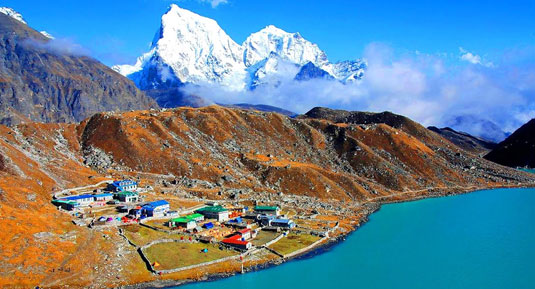 13 Nights – 14 Days
13 Nights – 14 Days
Best of India and Nepal Tour
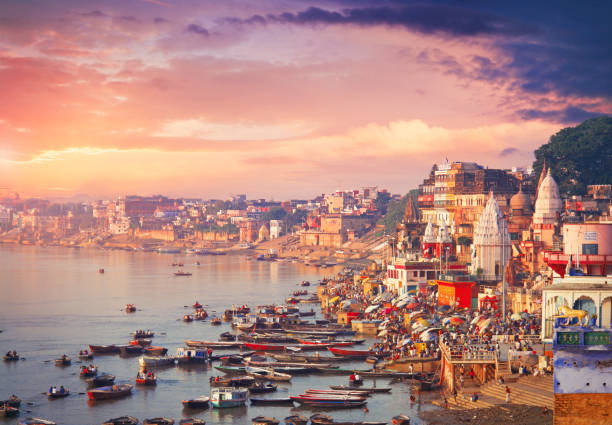
River Ganges
This river is personified as Goddess Ganga, and it’s considered holy by Hindus and Jains, believed to provide sustenance to all those who live by its banks and come to visit it from far away. Its purifying nature is so strongly upheld by Hindus who believe that taking a dip in its water is equivalent to absolution of all their sins and purification of the soul, as mentioned in the Puranas, ancient Hindu scriptures.
Kumbh Mela has been declared the largest peaceful gathering of more than 120 million pilgrims in one place at a time and has been mentioned in the UNESCO’S list of Intangible Cultural Heritage of Humanity. The main ritual of this gathering is pilgrims bathing themselves in the Ganges in the open in huge numbers, offering prayers and repentance for their sins. Tokens are set adrift in the river. Men smear white and orange paint and ash and storm into the river.
Although its sanctity is incomparable in modern Hindu culture, it has also become one of the most populated rivers in the world, with 80 % of the sewage being dumped here being left untreated.

Ghats
Literally, these are the riverfronts or the huge steps that lead down t the banks of the River Ganges. More than 100 ghats are present alongside the Ganges in Varanasi. The pilgrims and inhabitants of Varanasi flock to the ghats for offering prayers to the rising sun, and to meditate.
Each ghat has a special purpose for the pilgrims. A walk along any of these ghats provides a glimpse of the rich culture and lives of its dwellers. Some of the significant ghats are:
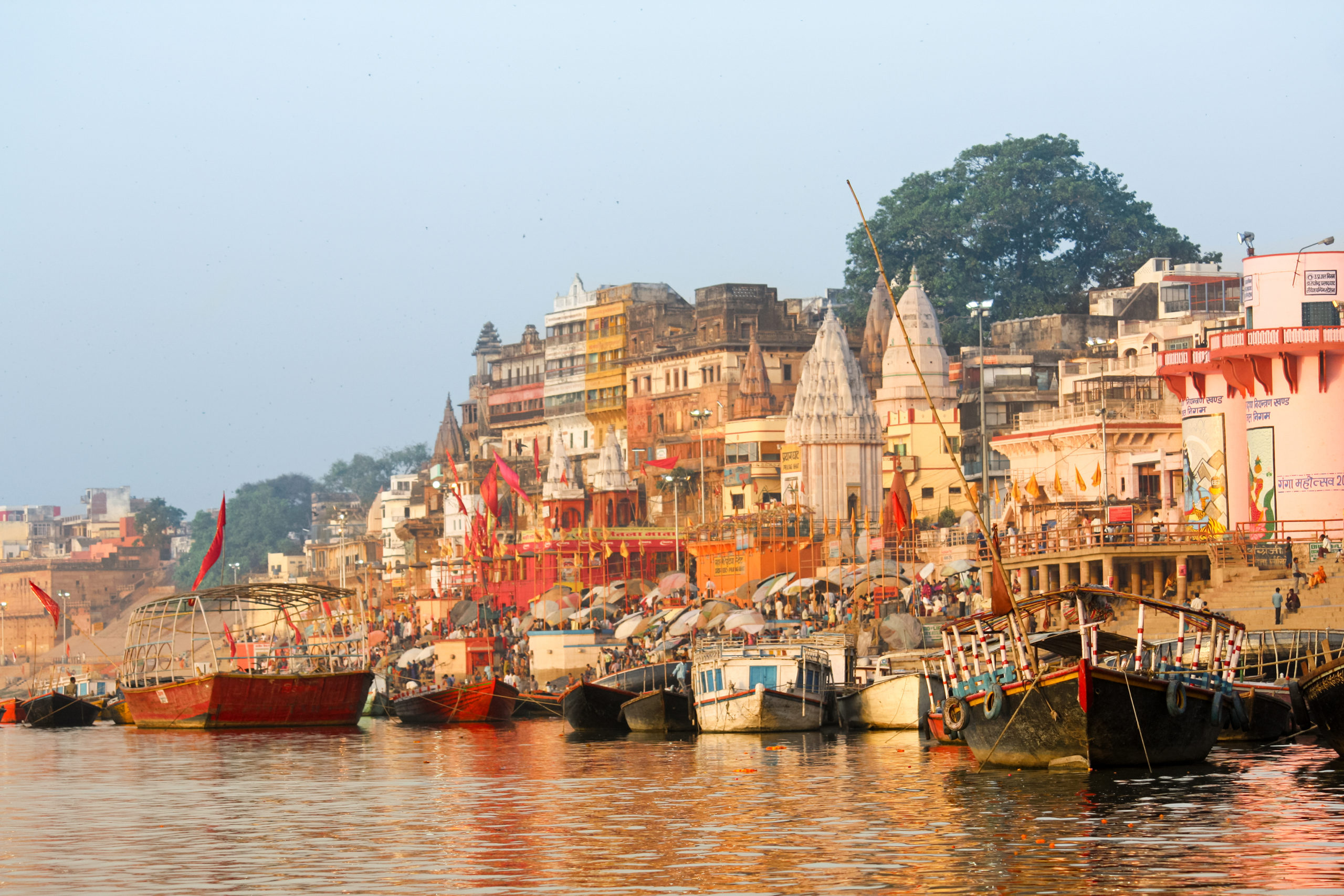
ManikarnikaGhat
This is the main cremation ghat in Varanasi. It is considered a very auspicious location for dying among the Hindus pilgrims. Hence the number of elderly and sick patrons comes here to breathe their last and be cremated.
The story goes that Lord Shiva himself gave Manikarnika Ghat its revered status. Lord Vishnu himself had to pray to Lord Shiva to forgive Varanasi. At the time, Varanasi was known as Kashi. Lord Shiva accepted his prayers and appeared before Lord Vishnu in Kashi, along with his wife, Parvati. Pleased from the prayers of Lord Vishnu, a boon was given to Varanasi. It is believed that any soul that receives its final ritual, the rites in Varanasi, receives moksha. Also known as freedom from the rebirth cycle.
It is believed that Lord Vishu built Manikarnika Kund, with an intention to offer a well for the couple to bathe. When Lord Shiva was taking his bath, one of his jewels fell off his earrings. The jewels that Shiva wore were known as Mani; hence the Ghat and Well received their name as Manikarnika.
Two to three hundred corpses are burned out in the open at this Ghatevery day. The corpse is first dipped in the Ganges to wash away all its sins and then burned at the banks. Piles of firewood line the shores. The ghastly sight of burning bodies might be too overwhelming to some tourist, so discretion is advised.
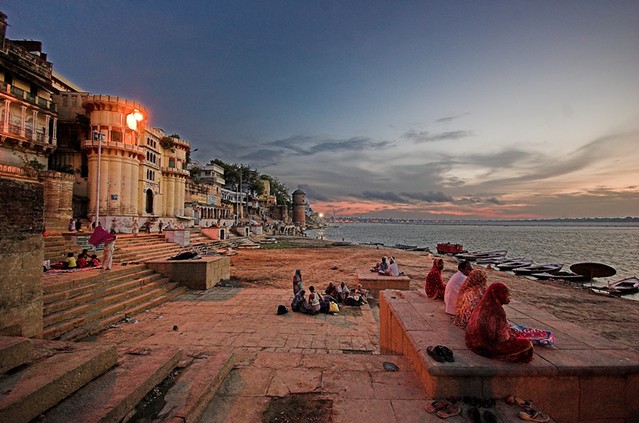
Assi Ghat
This ghat is the meeting place of the River Ganges and River of Assi at the southernmost part of Kashi. There is a custom for people to take a bath in the river stream of Ganga before worshipping Lord Shiva. He is located here in the form of a shivling, a black cylindrical pillar. It is believed that Goddess Durga had discarded her blood tainted sword after her battle and eventual victory over the demon Shumbha- Nishumbha. The place where the sword had fallen resulted in the formation of a stream of gushing water known as Asi River. Revered poet Tulsidas has been said to have written the Ramcharitmanasand to have taken his last breaths here.
Assi Ghat is frequented by foreign and local students, researchers and tourists being a secluded and spacious space. This Ghat can accommodate about 22,500 people during festivals that are held here, such as Shivratri and Diwali. This Ghat sees an influx of more than 300 tourists each day. Ganga Aarti is also a popular custom near the ghat that takes place every evening.

Dashashwamedh Ghat
A site of spectacular celebrations and pageantry, this is considered the main introductory Ghat in the heart of Varanasi. The AngniPooja(worship to the fire) takes place at this Ghat every evening. There is also a hectic marketplace here, due to which there is a constant and uninterrupted flow of tourists, priests, locals, photographers, sellers, beggars etc. Celebrations such as Diwali and Shrivrarti are celebrated grandiosely here. It is located close to the sacred Vishwanath Temple, and Jantar Mantar is a few paces from here. Boat rides all along the Ganges area available at this Ghat.
This ghat owes its origin to two legends. One goes as Lord Brahma built this ghat so that he can welcome Lord Shiva to Kashi. The other one states that Lord Brahma ten horses during the Dasa – Ashwamedhayajna, (a ritual performed in front of the huge sacred fire) he had performed in the name of Lord Shiva.
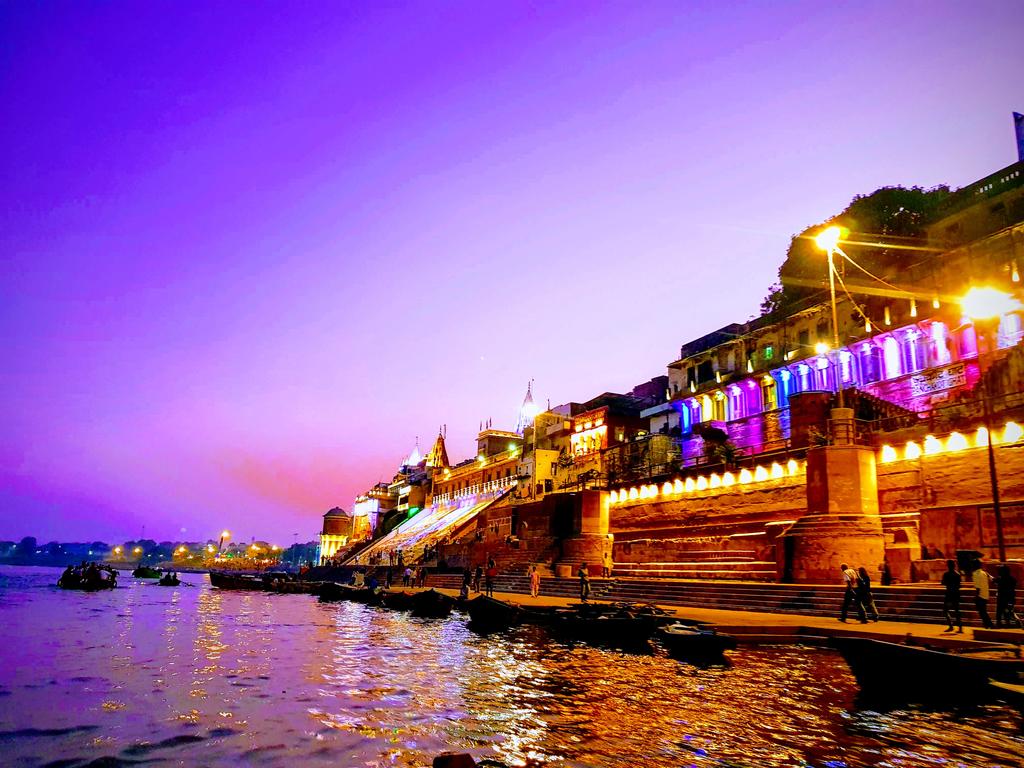
Other notable Ghats present in Varanasi are
- HarishchandraGhat- Similar to ManikarnikaGhat, this one is also solely used for cremation, getting its name from Raja Harishchandra did the last rituals of his son.
- Chet Singh Ghat- this Ghat is seen in history as the battleground of the 18th century battle between Maharaja Chet Singh, the ruler of Varanasi at the time and the British led by Warren Hastings, the first governor-general of India.
- ManmandirGhat- Popular for housing JantarMantar, built by RajaSavai Man Singh.
- ScindiaGhat- a picturesque and secluded ghat, it is notable for its submerged Shiva temple and a number of other nearby temples. This area is also called Siddha Kshetra
- Lalita Ghat. Inspired by the Pashupatinath Temple, Rana Bahadur Shah decided to build a replica. He was the kind of Nepal and under his reign, the temple was built in Kathmandu. Hence, the Nepali temple dedicated to Lalita was constructed. It is dedicated to Goddess Adi-Shakti, believed to be a primal deity, stronger than the Trinity.
- Darbhanga and MunshiGhat-Both of these ghats house parts of the spectacular Darbangha Palace. Part of this palace has been converted into a hotel.
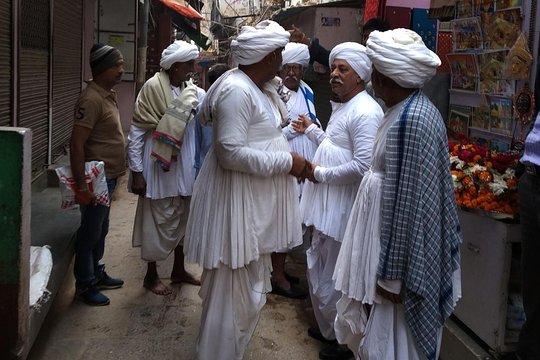
Varanasi: A City of Thousand Temples
Kashi boasts of more than 23,000 temples dotting every lane and corner of the city. Some are centuries old, and others are relatively new. These temples have become of great spiritual significance to Hindus across India. The crowning glory of Varanasi is its array of temples. Some of the most significant ones are:
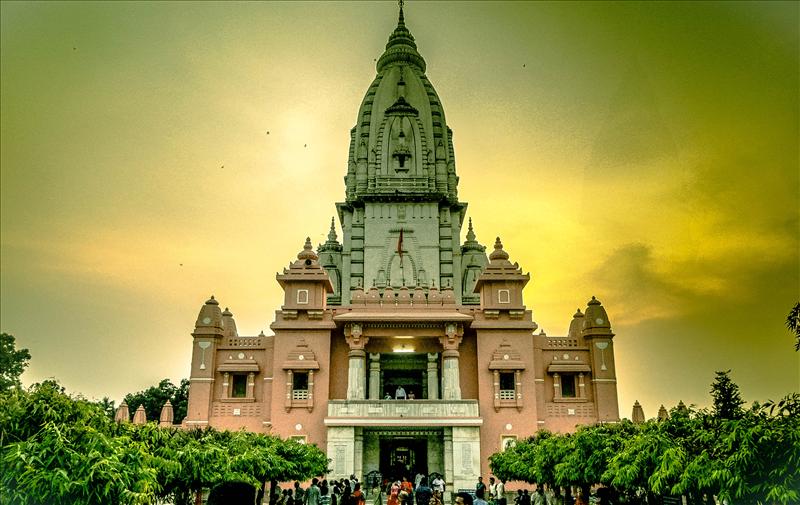
Kashi Vishwanath temple
One of the twelve Jyotirlingas or sacred centres of worship of Lord Shiva in India, Kashi Vishwanath Temple is thought of as the holiest temple on the planet by Hindus across India. It is believed to have been the site where Lord Shiva appeared in the form of light. It finds mentions in the ancient Puranas. Praying here is believed to guarantee your absolute moksha. It has been destroyed and rebuilt several times throughout history. Millions of devotees throng to this temple during celebrations of Diwali and Shivratri.
The outstanding structure has a gold dome, and a gold spire on top, constructed from the 1000kg of gold contributed by MaharajaRanjit Singh of Punjab in 1839. Vishwanath Temple is also known as the Golden Temple. It is believed that if you make a wish after seeing the dome, Lord Shiva will most definitely make it come true.

New Vishwanath Temple
Also known as the Birla Temple and inspired by the Kashi Vishwanath Temple,
This temple was built inside the campus of Banaras Hindu University, another landmark of Varanasi. This temple too is dedicated to Lord Shiva and constructed in grand white marble. An astonishing fact about this temple is that it possesses the tallest temple tower of any temple in the world. Measuring at 250 feet, this tower is now considered an architectural marvel. A total of 9 other shrines are also located there in this temple.

Durga Temple
A stunning specimen of Nagara style of architecture, which is a style of building temples on a stone platform and have giant steps that lead up to the main temple, popularly in Northern India. This red stone temple is built across a rectangular pond called Kund and features multi-tier spire. Dedicated to the goddess Durga, it was built by the orders of a Bengal queen n the 18thcentuary. The cool waters of the pond and the mesmerising beauty of the temple make for a memorable experience.
Legend has it that the idol of Goddess Durga inside the temple was not installed during its construction but in fact, appeared inside the temple. Devotees believe this as a blessing from Goddess Durga herself.

TulsiManasMandar
Constructed in 1964, it is adjacent to the Durga temple and equally striking. It was
named after Tulsidasthe reformer poet and dedicated to Lord Rama. Built-in
exquisite white marble, it is two-storied and features its own garden with lush
greenery and well-maintained lawns.
The significance of this splendid work of art can be seen in Tulsidas’s life work.
Tulsidas wrote the ancient Hindu Epic Ramcharitamanasaat this place, based on
the life history of Lord Rama. The epic came to become one of Tulsidas’s most
significant works.
To celebrate the life of Tulsidas and his work, the temple was constructed in the exact location and dedicated to Lord Rama. The walls were engraved with texts from Ramcharitamana

Some of the other significant temples are
- Nepali Temple- Built by the Nepal king RanaBahadur Shah as a replica of the Pashupatinath Temple in Kathmandu. He had also constructed the LalitaGauri temple.
- Vishalakshi Temple- Dedicated to the Divine Mother. The goddess is worshipped as the one with large eyes in this temple, and so, she is known as Vishalakshi (the word Vishal means large and akshi means eyes)
- Annapurna Temple- Dedicated to Annapurna, an incarnation of Goddess Parvati. In this temple, she is worshipped as the provider of food and nourishment.
- SankatMochan Hanuman Temple- Built by Tulsidas, it is dedicated to Lord Hanuman. The temple is filled with monkeys, reminiscent of Hanuman, the God with the face of a monkey.
- Bharat Mata Temple- The campus of Mahatma Gandhi KashiVidyapith contains this temple dedicated to Mother India. The temple was set up around the year 1936 by Babu Shiv Prasad Gupta.
Nearby attractions
Ramnagar Fort
One of the most visited places in Varanasi, this imposing Chunar sandstone structure was built by the ruler of Varanasi in 1750, Raja Balwant Singh and serve as the royal family’s official residence. Inspired by Mughal architecture, it overlooks the river Ganges with its intricate courtyards and balconies.
The fort has a part of it converted into a museum that houses the late royal family’s ossessions such as old photographs, ornaments, swords, attires and artefacts. During Dussehra, there is a spectacular Ramlila fest organized at the fort.
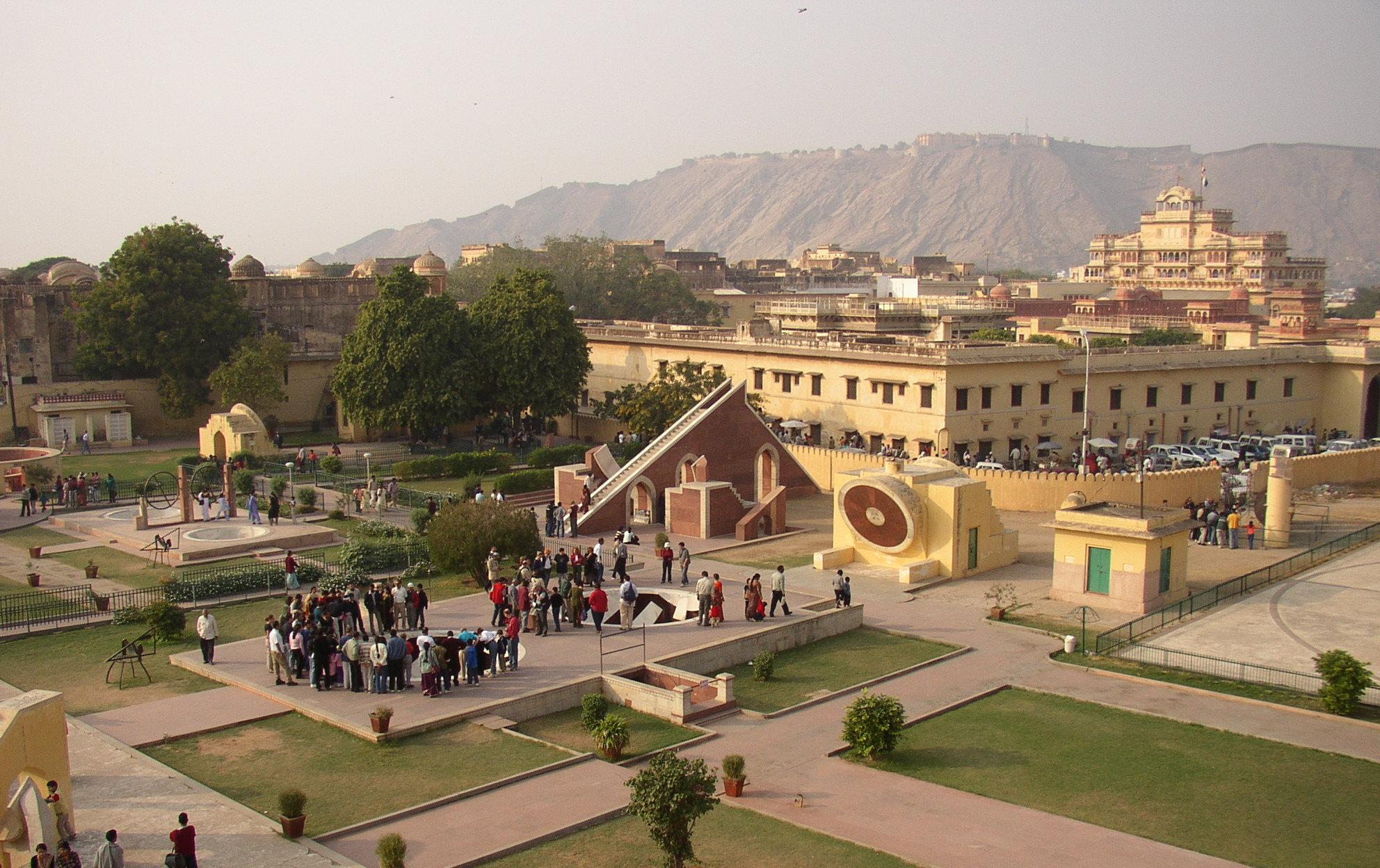
Jantar Mantar
This one of its kind space observatory built by Maharaja Jai Singh II of Jaipur in the year 1737 is one of most unique historical landmarks found in India. Near DasashwamedhaGhat, located on top of the Man Mahal, it features various astrological instruments of fascinating design.
Maharaja Jai Singh had a profound interest in astronomy, and he built five such observatories; the rest are in the cities of Delhi, Jaipur, Ujjain and Mathura.

Benaras Hindu University
The Banaras Hindu University upholds the practice of Varanasi being an ancient seat of learning and renaissance. Found in 1916 by Pandit Mohan Malviya, this university fascinates travellers with its Indo-Gothic architecture and extensive lawns. BHU is an iconic institution. It is the largest residential university in Asia. Located in the campus of the university is Bharat Kala Bhavan, a stirring museum with a wide collection of ancient manuscripts, sculptures and miniature paintings.

Attractions nearby Varanasi
Sarnath-
From a distance of 10 km from Varanasi is the town of Sarnath. Most notable for being the place where Buddha received enlightenment and gave his first dharma. A hot spot of pilgrimage for Buddhists, Archaeological Museum and the Ashoka Lion Capital in polished sandstone are other major attractions in Sarnath.
Ayodhya-
This town is considered as the birthplace of Lord Rama, located on the remarkable banks of River Sarayu. In addition to a large number of temples thronged by pilgrims annually, this town is considered one of the holiest by Hindus.Itis almost 205 kilometres away from Varanasi
Things to do in Varanasi
- Take a boat ride along the scenic Ganges and explore the various ghats and temples. Early morning rides are available from 5 am from the DashwamedhaGhat.
- Observe the fascinating art of brocade weaving. Varanasi is renowned for its silks called Benaras silk. It is woven into expensive sarees, dresses etc. In Rig Veda, Benaras has been mentioned as the Hiranya Vastra or golden cloth. You can also purchase this silk all around Varanasi, especially in Jatipura, Madanpura, Mubarakpur
- The shopping scene in Varanasi is nothing short of spectacular. The main bazaars such as Thatheri Bazaar, Vishwanath Lane, Godowlia and Chowk sell a variety of goods from Benrasisarees, brocade arts, idols for worship. You will also find enlightening books on Philosophy and Spiritualism. Many religion books of Hinduism and Jainism are also available. Jewellery and embellishment in the form of glass beads and bangles and necklaces of real rudraksha are also available.
- The culinary scene of Varanasi is as rich and flavorful as Varanasi itself.
- Try Kachorisubzi, and a tasty bun called kachori filled with vegetables at Kachori Bazaar or ThatheriGali.
- Chooramatar, green peas cooked with puffed rice at GopalMandirGali.
- MeetheGolgappe, a sweet crepe delight at GolGanj.
- TamatarChaat, a tomato delicacy served as an hors d oeuvre at Dashwamedh Road.
- Nimish (also known as makkhanmaliyyo), a creamy delight at KachoriGali.
- Try the PehelwankiLassi, a yoghurt drink at Lanka Crossing and the famed BanarasiPaan, tasty condiments wrapped in an edible leaf.
- And don’t forget bhang, which is cannabis in a drink, found at any bhang shop.

Varanasi is an ideal destination to start your pilgrimage holidays. The serene ghats of this destination are ideal to experience the saintly vibe. Explore the beautiful temples on the banks of River Ganges and other religious attractions through the attractive India tour packages from Colourful Indian Holidays.
Why travel with Colourful Indian Holidays

More than a decade of Industry Experience

Over 10,000 highly satisfied travelers from all around the world

Personalised Service for every guest based on their interest

TripAdvisor Certification Of Excellence continuously for 4 Years& Allied Member of IATO

